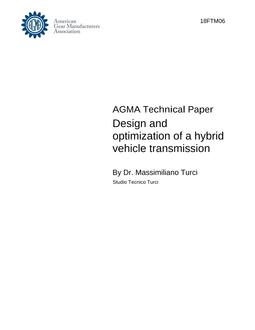-
-
Available Formats
- Availability
- Priced From ( in USD )
-
Available Formats
-
- Immediate download
- $47.00
- Add to Cart
-
- Printed Edition
- Ships in 1-2 business days
- $47.00
- Add to Cart
Customers Who Bought This Also Bought
-

AGMA 05FTM05
Priced From $47.00 -

AGMA 6034-C21
Priced From $310.00 -

AGMA 18FTM06
Priced From $85.00
About This Item
Full Description
In many transmission types, the lubricant fulfills other functions apart from lubricating the gearing, for example in friction elements (synchroniztr unit, clutch) in vehicle transmissions, or as a hydraulic fluid (torque converter, retarder, steering system). The modem trends are now high contact ratio gearing as well as the use of low viscosity lubricants to reduce churning losses.
Therefore, at the gear design and lubricant additive stages, compromises are now necessary, which require the most precise information possible on scuffing resistance of the gearing and lubricant.
It will be demonstrated that the normal test procedures for determining scufnng resistance are not suitable for lubricant ciassifícation for vehicle transmission (GL4and GL5). By reducing the tooth width as well as doubling the speed, the scuffing test to DIN 51354 sîandards was increased in severity to such an extent, that the parameters necessary for transmission dimensioning could be determined for even higher scuffing resistant oils.
The oil data necessary for suffícient scuffing resistaace wiii be shown for different transmission design types. With in the scope of life time oil fills, attention should be paid to oil aging processes.
The.profile and tooth trace of gears on modem transmission . ons are nowadays comcted, almost without exception, to compensate for load-related deformation and production discrepancies. in the current calculation procedures these corrections, which tend to increase scufnng resistance, are not considered to an adequate extent.
A process is being presented, in which scrifnng resistance is calculated for every point on the tooth flank, based on the "flash temperature method", and taking ail variations and corrections into account. It will be demonstrated with practical examples,that,as early as the design stage,this method can be used to detect flank are as at risk,and toeliminate them with a specific correction design.




